Hussein Sibai
University of Illinois at Urbana-Champaign
Learning Ensembles of Vision-based Safety Control Filters
Dec 02, 2024Abstract:Safety filters in control systems correct nominal controls that violate safety constraints. Designing such filters as functions of visual observations in uncertain and complex environments is challenging. Several deep learning-based approaches to tackle this challenge have been proposed recently. However, formally verifying that the learned filters satisfy critical properties that enable them to guarantee the safety of the system is currently beyond reach. Instead, in this work, motivated by the success of ensemble methods in reinforcement learning, we empirically investigate the efficacy of ensembles in enhancing the accuracy and the out-of-distribution generalization of such filters, as a step towards more reliable ones. We experiment with diverse pre-trained vision representation models as filter backbones, training approaches, and output aggregation techniques. We compare the performance of ensembles with different configurations against each other, their individual member models, and large single-model baselines in distinguishing between safe and unsafe states and controls in the DeepAccident dataset. Our results show that diverse ensembles have better state and control classification accuracies compared to individual models.
Pre-Trained Vision Models as Perception Backbones for Safety Filters in Autonomous Driving
Oct 29, 2024Abstract:End-to-end vision-based autonomous driving has achieved impressive success, but safety remains a major concern. The safe control problem has been addressed in low-dimensional settings using safety filters, e.g., those based on control barrier functions. Designing safety filters for vision-based controllers in the high-dimensional settings of autonomous driving can similarly alleviate the safety problem, but is significantly more challenging. In this paper, we address this challenge by using frozen pre-trained vision representation models as perception backbones to design vision-based safety filters, inspired by these models' success as backbones of robotic control policies. We empirically evaluate the offline performance of four common pre-trained vision models in this context. We try three existing methods for training safety filters for black-box dynamics, as the dynamics over representation spaces are not known. We use the DeepAccident dataset that consists of action-annotated videos from multiple cameras on vehicles in CARLA simulating real accident scenarios. Our results show that the filters resulting from our approach are competitive with the ones that are given the ground truth state of the ego vehicle and its environment.
Safe Decentralized Multi-Agent Control using Black-Box Predictors, Conformal Decision Policies, and Control Barrier Functions
Sep 27, 2024Abstract:We address the challenge of safe control in decentralized multi-agent robotic settings, where agents use uncertain black-box models to predict other agents' trajectories. We use the recently proposed conformal decision theory to adapt the restrictiveness of control barrier functions-based safety constraints based on observed prediction errors. We use these constraints to synthesize controllers that balance between the objectives of safety and task accomplishment, despite the prediction errors. We provide an upper bound on the average over time of the value of a monotonic function of the difference between the safety constraint based on the predicted trajectories and the constraint based on the ground truth ones. We validate our theory through experimental results showing the performance of our controllers when navigating a robot in the multi-agent scenes in the Stanford Drone Dataset.
A Grammar for the Representation of Unmanned Aerial Vehicles with 3D Topologies
Feb 27, 2023Abstract:We propose a context-sensitive grammar for the systematic exploration of the design space of the topology of 3D robots, particularly unmanned aerial vehicles. It defines production rules for adding components to an incomplete design topology modeled over a 3D grid. The rules are local. The grammar is simple, yet capable of modeling most existing UAVs as well as novel ones. It can be easily generalized to other robotic platforms. It can be thought of as a building block for any design exploration and optimization algorithm.
Certifying Safety in Reinforcement Learning under Adversarial Perturbation Attacks
Dec 28, 2022Abstract:Function approximation has enabled remarkable advances in applying reinforcement learning (RL) techniques in environments with high-dimensional inputs, such as images, in an end-to-end fashion, mapping such inputs directly to low-level control. Nevertheless, these have proved vulnerable to small adversarial input perturbations. A number of approaches for improving or certifying robustness of end-to-end RL to adversarial perturbations have emerged as a result, focusing on cumulative reward. However, what is often at stake in adversarial scenarios is the violation of fundamental properties, such as safety, rather than the overall reward that combines safety with efficiency. Moreover, properties such as safety can only be defined with respect to true state, rather than the high-dimensional raw inputs to end-to-end policies. To disentangle nominal efficiency and adversarial safety, we situate RL in deterministic partially-observable Markov decision processes (POMDPs) with the goal of maximizing cumulative reward subject to safety constraints. We then propose a partially-supervised reinforcement learning (PSRL) framework that takes advantage of an additional assumption that the true state of the POMDP is known at training time. We present the first approach for certifying safety of PSRL policies under adversarial input perturbations, and two adversarial training approaches that make direct use of PSRL. Our experiments demonstrate both the efficacy of the proposed approach for certifying safety in adversarial environments, and the value of the PSRL framework coupled with adversarial training in improving certified safety while preserving high nominal reward and high-quality predictions of true state.
SymAR: Symmetry Abstractions and Refinement for Accelerating Scenarios with Neural Network Controllers Verification
Nov 21, 2020
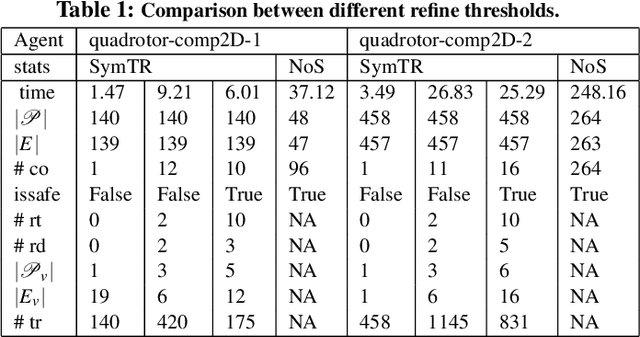
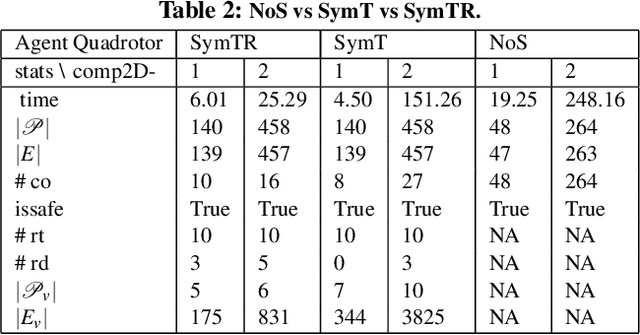

Abstract:We present a Symmetry-based abstraction refinement algorithm SymAR that is directed towards safety verification of large-scale scenarios with complex dynamical systems. The abstraction maps modes with symmetric dynamics to a single abstract mode and refinements recursively split the modes when safety checks fail. We show how symmetry abstractions can be applied effectively to closed-loop control systems, including non-symmetric deep neural network (DNN) controllers. For such controllers, we transform their inputs and outputs to enforce symmetry and make the closed loop system amenable for abstraction. We implemented SymAR in Python and used it to verify paths with 100s of segments in 2D and 3D scenarios followed by a six dimensional DNN-controlled quadrotor, and also a ground vehicle. Our experiments show significant savings, up to 10x in some cases, in verification time over existing methods.
Unmanned air-traffic management (UTM): Formalization, a prototype implementation, and performance evaluation
Sep 10, 2020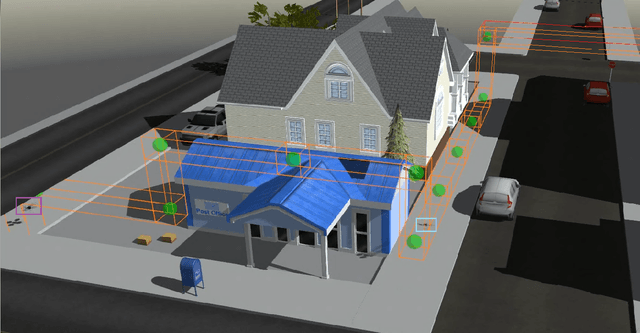
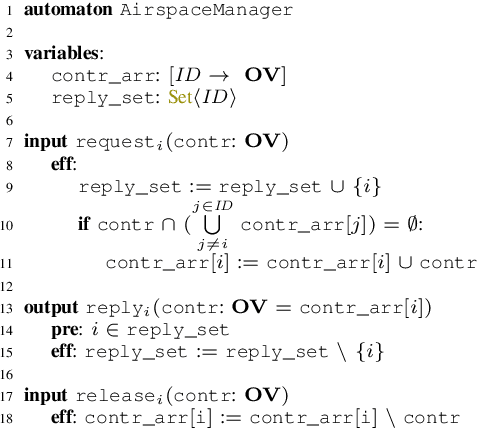
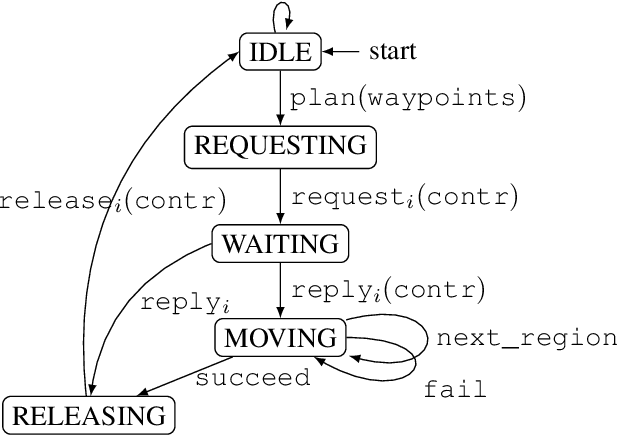
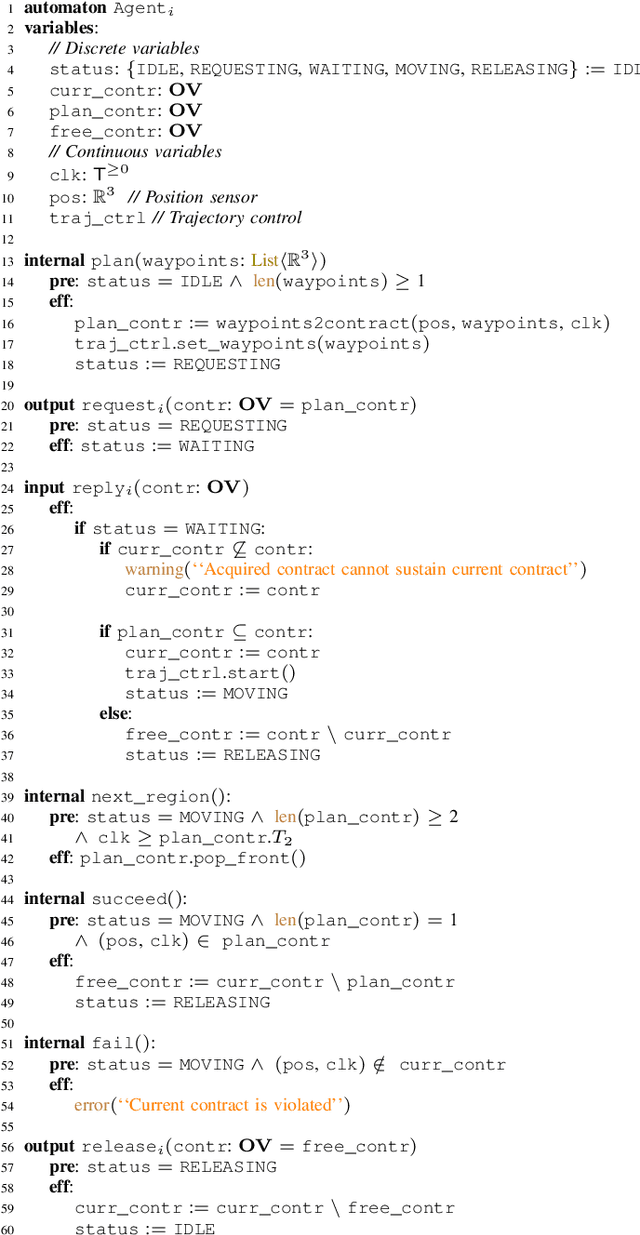
Abstract:Unmanned Aircraft Systems (UAS) are being increasingly used in delivery, infrastructure surveillance, fire-fighting, and agriculture. According to the Federal Aviation Administration (FAA), the number of active small commercial unmanned aircraft is going to grow from 385K in 2019 to 828K by 2024. UAS traffic management (UTM) system for low-altitude airspace is therefore immediately necessary for its safe and high-density use. In this paper, we propose the first formalization of FAA's Concept of Operations for UTM for building and analyzing traffic management protocols and systems. We formalize FAA's notion of operation volumes (OVs) that express aircraft intent in terms of 4D blocks of airspace and associated real-time deadlines. We present a prototype coordination protocol using OVs, involving participating aircraft and an airspace manager. We formally analyze the safe separation and liveness properties of the protocol. Our analyses showcase how the de-conflicting and liveness of the system can be proven assuming each aircraft conforms to the deadlines specified by OVs. Through extensive simulations, we evaluate the performance of the protocol in terms of workload and response delays. Our experiments show that the workload on the airspace manager and the response time of each aircraft grow linearly with respect to the number of aircraft. The experiments also delineate the trade-off between performance, workload, and violation rate across different strategies for generating OVs. Lastly, we implement a UTM violation detection and resolution mechanism on top of our protocol. We include a simple fault injection technique that introduces failures with different probabilities. We demonstrate how to use it to empirically evaluate the impact of aircraft failure on the safety of surrounding aircraft, and how the performance of the airspace manager changes under different failure probabilities.
Differential Privacy for Sequential Algorithms
Apr 01, 2020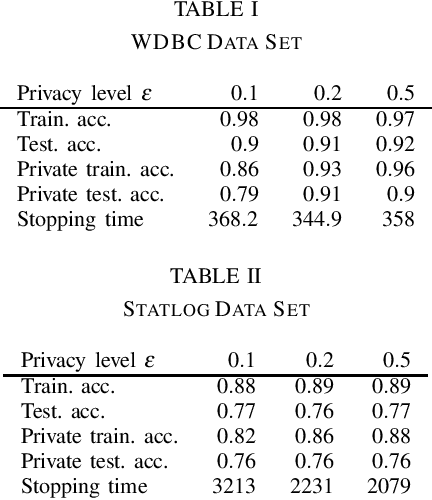
Abstract:We study the differential privacy of sequential statistical inference and learning algorithms that are characterized by random termination time. Using the two examples: sequential probability ratio test and sequential empirical risk minimization, we show that the number of steps such algorithms execute before termination can jeopardize the differential privacy of the input data in a similar fashion as their outputs, and it is impossible to use the usual Laplace mechanism to achieve standard differentially private in these examples. To remedy this, we propose a notion of weak differential privacy and demonstrate its equivalence to the standard case for large i.i.d. samples. We show that using the Laplace mechanism, weak differential privacy can be achieved for both the sequential probability ratio test and the sequential empirical risk minimization with proper performance guarantees. Finally, we provide preliminary experimental results on the Breast Cancer Wisconsin (Diagnostic) and Landsat Satellite Data Sets from the UCI repository.
Online monitoring for safe pedestrian-vehicle interactions
Oct 12, 2019



Abstract:As autonomous systems begin to operate amongst humans, methods for safe interaction must be investigated. We consider an example of a small autonomous vehicle in a pedestrian zone that must safely maneuver around people in a free-form fashion. We investigate two key questions: How can we effectively integrate pedestrian intent estimation into our autonomous stack. Can we develop an online monitoring framework to give formal guarantees on the safety of such human-robot interactions. We present a pedestrian intent estimation framework that can accurately predict future pedestrian trajectories given multiple possible goal locations. We integrate this into a reachability-based online monitoring scheme that formally assesses the safety of these interactions with nearly real-time performance (approximately 0.3 seconds). These techniques are integrated on a test vehicle with a complete in-house autonomous stack, demonstrating effective and safe interaction in real-world experiments.
Adversarial Examples that Fool Detectors
Dec 07, 2017



Abstract:An adversarial example is an example that has been adjusted to produce a wrong label when presented to a system at test time. To date, adversarial example constructions have been demonstrated for classifiers, but not for detectors. If adversarial examples that could fool a detector exist, they could be used to (for example) maliciously create security hazards on roads populated with smart vehicles. In this paper, we demonstrate a construction that successfully fools two standard detectors, Faster RCNN and YOLO. The existence of such examples is surprising, as attacking a classifier is very different from attacking a detector, and that the structure of detectors - which must search for their own bounding box, and which cannot estimate that box very accurately - makes it quite likely that adversarial patterns are strongly disrupted. We show that our construction produces adversarial examples that generalize well across sequences digitally, even though large perturbations are needed. We also show that our construction yields physical objects that are adversarial.
 Add to Chrome
Add to Chrome Add to Firefox
Add to Firefox Add to Edge
Add to Edge